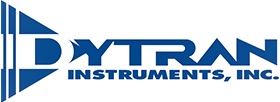Vibration Testing and Accelerometer sensors
"How loud can that speaker get before it breaks?"
LabroTek Ltd solutions for vibration testing in Scandinavia and Baltics.
Our partners are RMS, Vibration Research, DynaLabs
We offer top of the line vibration-shaker testing solutions and sensor solutions to Scandinavia and Baltics regions.
Vibration controllers are from our long term supplier partner Vibration Research
Accelerometer sensors
LVDT sensors
MEMS Capacıtıve Accelerometers, MEMS Pıezoresıstıve Accelerometers, MEMS Gyroscopes,
Inertıal shakers, Modal shakers
Our suppliers for acceleration sensors Dynalabs, Dytran and Monitran
- Electro-dynamic vibration test systems
- Ground Vibration testing ( GVT )
- EQ test solutions
- Shaker systems air cooled
- Shaker systems water cooled
- Slip tables ( magnesium )
- Permanent magnet shakers
- Modal shakers are lightweight, powerful shakers up to 15,000 Hz and force up to 440N with a max 25mm stroke.
- Inertial shakers
- Vibration controllers ( Vibration Research : Medallion, VR 9500, VR 10500 )
- MEMS, GYRO, LVDT sensors
- Tri-axis electro-dynamic vibration test systems
- Shakers from low to extra high force
- Permanent magnet shakers
- Head expanders ( magnesium )
- Shaker and environmental chamber combinations
- Shakers for ATEX areas, and battery testing solutions
Service and maintenance for B&K/LDS and RMS, and TIRA shakers
We also offer accelerometer sensor calibrations ( ISO/DAKKS , any sensor brands )
Industrial sensors, Acceleration sensor
![]()

![]()









Standard Shaker vs. Modal Shaker vs. Inertial Shaker
Inertial Shakers
We can also supply you with all the accessories you will need:
- Digital power amplifiers and replacements for of your old amplifiers
- Vibration controllers for all shaker brands
- Accelerometer sensors and accessories
If you have something more specific in mind, our staff will be happy to assist you and evaluate your testing requirements, so that you will get the equipment you need.
Why electro-dynamic vibration test systems?
Alternative solutions do exist, but electro-dynamic shakers are well suited for most vibration testing with several advantages when compared to other solutions. The frequencies, for example, go much higher than with hydraulic shakers. High frequencies are especially important with electronic components. Also, electro-dynamic shakers are easy to program for random vibration testing.
Important fields of vibration testing
Random vibration testing simulates the real world
You may believe in destiny, but for vibrations the world is full of randomness. For airplanes flying in turbulence and cars driving on rough roads, it’s simply not plausible to generate computer models that would take every single detail into account.
So how do you go about reducing the risk factors of random vibration? Well, you fight fire with fire. Our vibration testing equipment is ready to perform accurately randomized vibration tests based on your specific parameters. Random vibration testing your product until it breaks is the best way to identify hidden design weaknesses and issues.
To further boost accuracy, real life field measurements can be used to simulate more plausible random vibrations.
Sine vibration testing
Sine vibration has the shape of a sine wave (duh). Perfect sine vibrations are somewhat rare in the real world, but they are useful for finding any hidden resonation frequencies within the object. Eliminating resonation means eliminating possible early breaking of your products.
To spice things up, you can use swept sine testing. The frequency and rate fluctuate to better find resonations and design flaws. If the environment for the object is something where the vibrations are well known, such as an engine, the swept sine test can continue for a long time to simulate a lifetime of fatigue stress and vibration.
Shock vibration testing
When your product is meant to be used in environments, where sudden and extreme shocks are to be expected, shock vibration testing is what you need. Standard drop testing answers your questions regarding product resilience when mishandled during transportation or use. Imagine a cell phone maker that wouldn’t rigorously test their phones with drop tests.
First, sensors are attached to your product in critical places that are most severely affected by shocks. Then, you simply drop the product. The falling distance can be anything from a few centimeters to many meters.
The most enthusiastic shock vibration testers are all the makers of things humans use. We tend to drop things. Gun and ordinance industries are other major shock testing fields. Shocks are also very commonplace in rockets. During the booster stage, pyro-shocks heat up certain areas with extreme temperature differences.
Contact us
